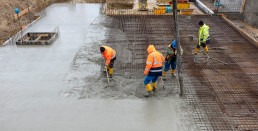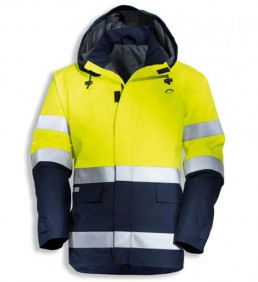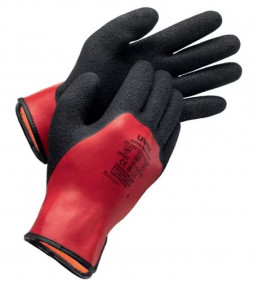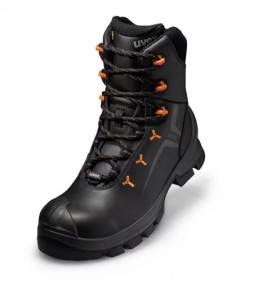With the winter months come icy temperatures, biting winds and snowfall. Wearing the right clothing to protect against the cold becomes an absolute must in everyday work life, especially if you work in the outdoors for hours on end. Learn about the basic legal requirements for PPE in minus temperatures and find out which equipment is always included in winter work clothing.
Working outdoors – why winter PPE is so important
Working in minus temperatures is tough. If you don’t adequately protect yourself against low temperatures, this can quickly lead to health issues that restrict your ability to work. Colds are one potential risk with symptoms such as a sore throat, runny nose and hoarseness. Insufficient protection against the cold can also lead to frostbite of the skin or extremities. The face and soft body parts such as the fingers, toes, nose and ears are most commonly affected. Frostbite damages the tissue and depending on its severity, it can in some cases no longer be cured, at which point amputation may become necessary.
The right winter work clothing provides:
- Protection against the cold
- Protection against wet conditions
- Protection against heat build-up & perspiration
- Visibility in adverse weather conditions
When it comes to work clothing, a distinction is usually made between workwear and PPE. While workwear makes your work easier, PPE is subject to standards and testing and should protect you against accidents in the workplace. Winter work clothing can be workwear or PPE.
Cold protection clothing: regulations
Working outside in the cold requires special work clothing with cold protection. Rules on winter work clothing for specific work areas and situations are set out in regulations by the German Social Accident Insurance (DGUV), for example in regulation 112-189. Among other things, this rule stipulates that employers must provide their employees with appropriate equipment to protect them against wet conditions, wind and the cold. In temperatures of up to minus five degrees, so-called weather protection clothing is used and in colder temperatures, cold protection clothing must be provided.
If you work outside in winter, you must have regular breaks to warm up. If the temperature is below five degrees Celsius, these breaks must happen around every 90 minutes and last approximately 15 minutes. In temperatures between plus five and ten degrees, you should warm up every 150 minutes. These guidelines are stipulated by DIN Standard 33403. However, this refers to work in cooler indoor spaces so further stressors such as wind and precipitation are not taken into account. In case of doubt, it is therefore better to take more frequent breaks to prevent hypothermia.
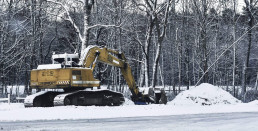
Clothing against the cold – how to protect yourself
As well as a warm jacket, you need extra equipment when working in minus temperatures to protect yourself from bitterly cold weather in the long term. Warm layers and smart, functional materials are an absolute must.
The warm layered look
If you’re getting dressed for a long working day in the outdoors, make sure to rely on different layers that will keep you warm but that can be removed when needed. Get started with functional undergarments that are practical. It’s worth investing in long undergarments that are made of soft, warm materials like merino wool. Alternatively, functional materials like Trevira Bioactive provide maximum wearer comfort. Even when you sweat, this material stops you cooling down. It also has an antibacterial effect that protects against the formation of odours. You can wear a warm sweater and your work trousers over these bottom layers. As well as a long-sleeved undershirt and a long pair of undertrousers, you should also wear thick socks made of merino or alpaca wool, for example, to protect your toes from the cold.
The right work jacket
The right jacket is one of the most important items of clothing for working outdoors. When purchasing a PPE winter jacket, you should pay attention to the following factors:
- Weatherproof material: Your winter jacket should be made of a fabric that can keep out rain and wind and maintain your body temperature. That’s why smart functional fabrics made of synthetic materials are often used. A lining made of warm synthetic materials or down can provide additional insulation. Multifunctional jackets like the uvex metal 3-in-1 weather jacket, which has a removable fleece jacket, are particularly practical. You can choose which layers you would like to wear depending on the weather.
- Breathability: Of course your jacket should keep you warm, but even in winter, sweating should also be avoided as much as possible. Otherwise, you run the risk of sweat making your clothing damp, which can make you cold as soon as you are no longer active and start to cool down. That’s why winter work clothing is made of breathable materials that allow air to circulate with the help of membranes and wick away the resulting water vapour when you sweat. Adjustable air vents in winter PPE also support a good body temperature.
- Cut and length: A winter jacket for working in minus temperatures must fit perfectly. That means it cannot be too tight so that your freedom of movement is not restricted and you can easily wear other layers underneath. But a jacket that’s too loose can also lead to problems: it won’t close properly and will let heat escape. Make sure that the sleeves of your jacket are long enough: they should cover the wrists and have cuffs at the ends that can be adjusted with additional Velcro fasteners.
- Visibility: In winter, fog and rain as well as short days with little sunlight lead to poor visibility in the outdoors. To guarantee the safety of employees, it is absolutely necessary to make sure they are as visible as possible when working. Wearing jackets in bright colours is one of the most important measures – the familiar warning yellow colour provides particularly good visibility. Jackets must also be equipped with additional reflective strips that reflect light from vehicles and can therefore provide protection against dangerous accidents, especially in the dark.
- Pockets: A high-quality winter jacket provides warmth, but it should also be as practical as possible for day-to-day work. A number of pockets allows you to store your tools and valuables. You will also always have your mobile phone at hand.
Caps and gloves
Of course you must also keep your head warm in low temperatures. If you also have to wear a safety helmet, you should wear a specially designed helmet cap, balaclava or winter cap. These are thin, comfortable and protect your ears against the cold and wind.
Because our fingers and hands are particularly sensitive to the cold, you should definitely wear gloves, especially if you carry out intricate work and rely on the feeling in your fingertips. Winter gloves for outdoor work are robust, warm and at the same time thin enough to not limit you in your day-to-day work.
Avoid fogged-up lenses
If you wear safety glasses or your own glasses at work, you will know the problem: when the surrounding air is cold and you enter a warm room, your lenses will fog up almost immediately. The same thing can happen if you wear a protective mask and the warm air you breathe hits the lenses of your glasses. This clouded view is very annoying, however you should not go without eye protection for safety reasons. Instead, you can rely on specially developed cloths for glasses like the uvex antifog cloth, which protects against fogged-up lenses. Alternatively, there are safety glasses like the uvex ultravision goggles, which have an anti-fog coating to prevent the annoying problem of steamed-up lenses.
Arbeitsstiefel für den Winter
If your fingers are cold, it probably won’t be long before your toes start to get cold too. Of course, they are surrounded by socks and shoes, but they are still close to cold ground that may also be covered with mud or snow. Good work boots for winter should be comfortable and keep your feet dry and warm all day long. Smart materials, usually a mix of leather and functional fabrics, as well as a warm lining make this possible. Many winter shoes also have an insulating midsole, which keeps away the cold that rises from the ground. At the same time the shoes are breathable to prevent perspiration inside the shoe.
Slip resistance is also particularly important when it comes to winter work boots. After all, slush and ice can make the ground slippery and treacherous, especially in winter. That’s why the shoes usually have a very deep tread that gives you a lot of grip, even on slippery ground.
Discover winter work clothing in the uvex range
Whether it’s warm jackets, practical gloves and caps or slip-resistant safety shoes: you’ll find the right PPE in uvex’s range – even for those cold winter days. Our products are ISO-certified and therefore produced in a sustainable and resource-efficient way – for quality made in uvex.
